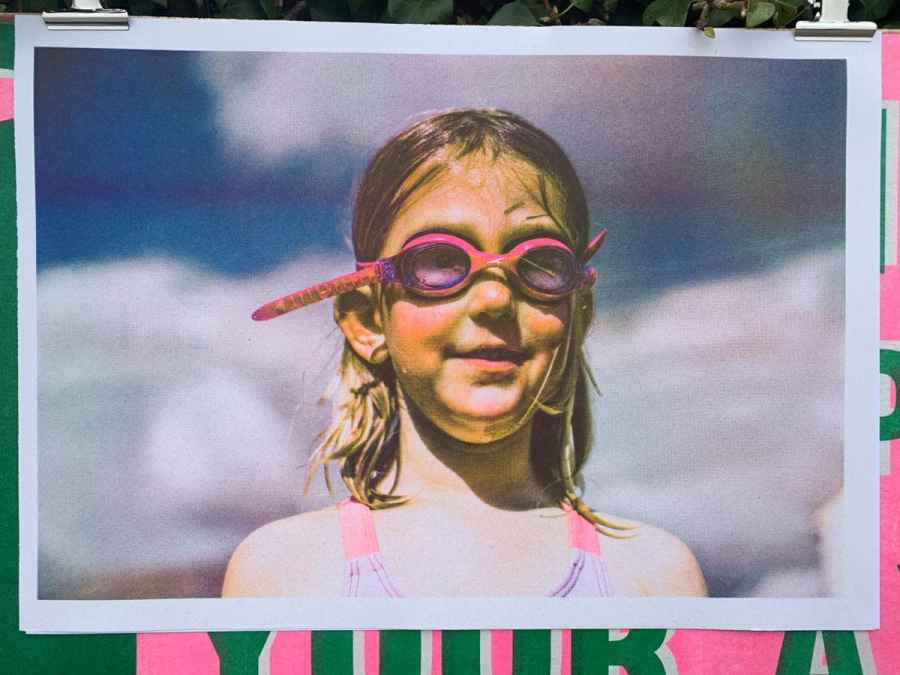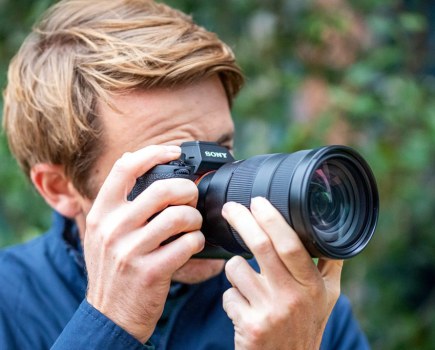Many of us are becoming more conscious of our environmental impact, and rightly so. As the population grows, it is evident that we cannot sustain the same level of waste we have been producing, or carry on polluting the atmosphere at the same rate we have been. There are many areas within our photography where we can make more sustainable and green choices, and that includes printing.
There are three main eco-friendly printing areas to consider: the printer (or using an external printing company); what ink to use and how it is supplied; and paper choice.
Producing a print, however much you take into account its environmental impact, is still going to use up energy. This doesn’t mean every image should remain on the screen, however, as there are few things as pleasing as a photographic print – it’s simply a case of giving careful consideration to exactly which images you want to see in print form.

The RISO inks are soy based and come in an array of colours on a drum system. Photo: Amy Jemmet
Eco-friendly photographic paper
There are many green, sustainable companies that produce 100% recycled paper products. However, when it comes to sourcing specialised photographic papers, it can be harder to find the eco-friendly ones, and there are a number of factors to be aware of. For instance, resin-coated types account for many of the photographic papers in circulation today, and most are produced using a thin coating of plastic. These papers therefore use more chemicals in the manufacturing process and cannot be recycled. Inkjet papers that do not have a plastic coating are better from an environmental perspective, and can be recycled.
It’s also important to look for the FSC-certified logo to check papers have been sourced responsibly, and if you can find ones that have been produced through a 100% or partly recycled process, then all the better. For a comprehensive guide to making the best green choices when it comes to photo paper, check out Dr Joe Zammit-Lucia, Green In Print, at www.conservatree.org/paper/Choose/GreenInPrintApril08.pdf. His recommendation is to source a 100% cotton rag paper.
Eco-friendly printing inks
When it comes to inks, some are greener and more sustainable than others. Currently, two eco-friendly products stand out: soy-based inks, which are made from soybean, and vegetable-based inks that are made from linseed oils. If you want to have a greener footprint, then it is best to avoid heavily petroleum-based inks, as they contain higher amounts of volatile organic compounds (VOCs), including toluene, benzene and xylene, which are compounds that can be harmful to both the environment and people.
Eco-friendly home printing
If you plan to get serious about home printing, then consider a printer with an individual ink cartridge system. This means you need only replace the ink used, as opposed to the whole bulk. This is a must, not only from a green perspective but also a cost one. It’s also worth researching energy consumption, and how thirsty your printer is on the inks. You’ll need to look into ink ingredients, too, as ideally to get the best quality prints it’s advisable to stick to the printer manufacturer’s own inks.
You may also want to consider refillable ink cartridges. You’ll save money here, too, as it’s cheaper to buy ink in bulk.
This solution alone won’t save the planet, but as a positive you are stopping many unrecyclable empty ink cartridges going into landfill for eternity.
Eco-friendly printing companies
If you are only going to print a few images a year, using a printing company is a far more eco-friendly printing solution than buying a printer. There are two environmentally conscious printing companies based at Mount Pleasant Ecological Park in Cornwall (www.mpecopark.co.uk): Monkey Puzzle Repro Art (monkeypuzzleart.co.uk) and Eco Park Press (www.mpecopark.co.uk/the-eco-park-press). Mount Pleasant Ecological Park is run in an ecological and sustainable manner. Electricity is powered by an on-site wind turbine, which produces 30% of its electricity, and another 20% is produced by 4kW solar PV panels. Its water comes from a borehole, which can provide 10,000 litres of water a day, and it also harvests rainwater to flush the toilets. Before either printing company has even begun printing, they have the green edge over their competitors!

Eco Press Printing is based at the Mount Pleasant Ecological Park in Cornwall. This is the workspace with RISO printer in the background. Photo: Amy Jemmet
When it comes to going green in any aspect of our lives, it is best to make small changes where we can. After all, it is far better for lots of photographers to make one or two changes than for just one to be printing in a perfectly green way. So if you can’t compromise on inks, then opt to avoid a non-recyclable resin-coated paper – or vice versa. If we all start to make small changes, we cannot fail to make an impact on a mass scale, and that has to be worth striving for.
All about Monkey Puzzle
Want to find an eco-friendly-conscious printing company? Monkey Puzzle has much to offer.

Photo: Monkey Puzzle
Monkey Puzzle Repro Art is a printer specialising in reproduction of artwork and photography.
Based in Cornwall at Mount Pleasant Ecological Park since 2007, its building is the largest rammed-earth building in the UK. Being based here means Monkey Puzzle’s printers and computers are powered by renewable energy.
Monkey Puzzle produces giclée prints up to 1m wide and 2.5m in length on an Epson Stylus Pro 9900. It uses archival-quality papers from Hahnemuehle (www.hahnemuehle.com), made from 100% natural fibres, including pure cotton and bamboo fibre.
This gives a deliciously warm effect to photographs, especially portraits. The company also prints on canvas and stretch over frames made to measure.
Monkey Puzzle also prints postcards and greeting cards using a Xerox Versant 180 laser. It uses 100% recycled card and paper through this machine, much of it locally sourced in Devon from Higher Kings (higherkings.co.uk).
Finally, it uses cellophane made with NATIVIA bio-based film for wrapping and Dispa Board (as an alternative to foam board) for floating frames and gallery-ready prints), which is FSC approved, recyclable and PVC free.
Eco-friendly printing: RISO printing
Amy Jemmett from Eco Press Printing shares her top tips.
What is RISO printing?
RISO printing produces unique results using a stencil process and ink drums that screen prints an image onto the paper. It’s a really involved process from start to finish that requires you to make creative decisions, from the colour of the inks to the choice of paper. With a restricted colour range, including fluorescent pink and metallic gold, prints can use between one and five ink colours overlaid to create interesting and unique results. As each colour is applied separately, misregistration frequently occurs, where some layers don’t quite line up. This is actually a celebrated aspect of RISO printing and can be used to great effect.

Here, Amy Jemmet from Eco Press Printing created an artistic result using the RISO printing process. Photo: Amy Jemmet/Claire Gillo
How does the printer create the stencil?
There are two ways to make a stencil (each colour will need its own). Either scan your image into the built-in 600dpi scan bed on the printer, or send the image from the computer. Originals need to be in greyscale for the printer to create its own stencil (or master) by burning holes into a sheet of stencil paper and applying it to the print drum. Once the master has been created, you can print anything from 10 to 10,000 copies from each stencil, with higher print runs offering the most cost-effective option.
How might photographers use RISO?
Although RISO printing may not speak to the traditional photographer, there are many who will love it. It enables you to experiment with ink colours, using many or just one, plus you can also set the printer to create a halftone dot or grainy effect. Halftone adds a wonderful texture, which has proved popular for portraits and landscapes. It is possible to recreate a full-colour photo by overlaying four inks: blue, fluorescent pink, yellow and black, which gives a retro quality and a unique finish.
What inks do you use?
We have a range of six ink colours that are soy based and supplied by RISO. These wet inks (rather than toner) dry naturally and need no heat to fix them, which is just
one aspect of what makes this an environmentally friendly print process.

A RISO print using just one ink to create a bold and eye-catching result. Photo: Amy Jemmet/Claire Gillo
What paper do you use?
We use RISO MF9350 on prints in sizes up to A3 on a maximum of 300gsm thickness. Eco Park Press stocks a range of locally produced recycled papers, which we like to use, including coloured and unbleached tones. Clients are also welcome to provide their own, but all papers must be uncoated.
Eco Press Printing offers RISO print workshops, inductions and open access sessions to use the Eco Park press print room. Go to www.mpecopark.co.uk/the-eco-park-press.
Read more:
[collection name=”medium”]







